I have explored 3 basic suspension types for my tilting Free To Caster reverse trike. I will explain what I feel are the pros and cons of each with some illustrations of various concepts.
Scrub is when the contact patch moves sideways relative to the plane of the wheel. Scrub does not happen when the suspension travels inline with the lean angle.
Track is the distance between between left and right contact patch of the wheels. When suspension travel moves inline with the lean angle, at high lean angles track can be reduced. This has less negative effect than scrub.
- Double A-arm
- Short A-arm
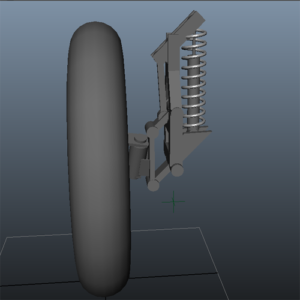
- 4 inches travel (may be able to get 5 inches if max lean is reduced to 40 degrees)
- 1 inch bounce scrub
- Extra linkage makes it slightly more complicated than long a-arm
- Max lean angle 45 degrees
- Taller than wheel height
- Long A arm

- Clean look
- Could be cantilevered to have shock inboard
- Max lean angle 45 degrees
- 9 inches of travel possible
- Minimal bounce scrub
- Simple construction
- Does not move in line with lean angle which may cause bounce force to effect lean angle
- Short A-arm
- Sliding Pillar
- traditional
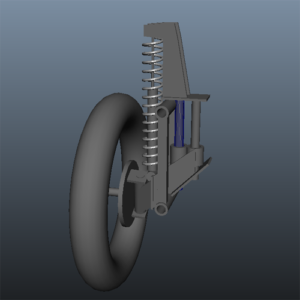
- 5 inches of travel
- Moves in line with lean angle
- Max lean angle 40 degrees
- Expensive and complicated fabrication
- Shock must extend way above wheel
- No bounce scrub
- cantilevered
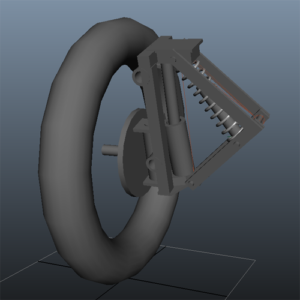
- 5 inches of travel
- Moves in line with lean angle
- Suspension does not extend above wheel height
- Max lean angle 40 degrees
- Expensive and complicated fabrication
- No bounce scrub
- Side linkage unsightly
- Side linkage will require wider track
- traditional
- Leading Arm
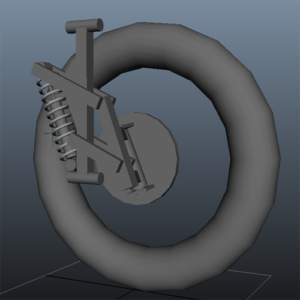
- 5 inches of travel
- Moves in line with lean angle
- Suspension does not extend above wheel height
- Max lean angle 40 degrees
- Slightly complicated fabrication
- No bounce scrub
- Significant bounce steer
- Can be configured for anti-dive when breaking.
- Rotating Leading Arm
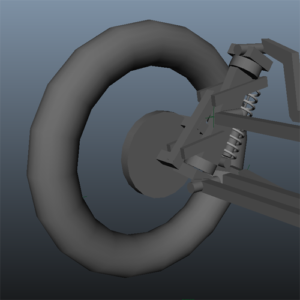
- 5 inches of travel
- Moves in line with lean angle
- Suspension does not extend above wheel height
- Max lean angle 40 degrees
- Complicated fabrication
- No bounce scrub
- No bounce steer
- Can be configured for anti-dive when breaking.
In summary, I conclude that the Rotating Leading Arm suspension is the best choice for suspension design for the following reasons:
- 5 inches of travel
- Moves with lean angle.
- Suspension does not extend above wheel height.
- No bounce steer.
- No bounce scrub.
- Can be configured for anti-dive when breaking.